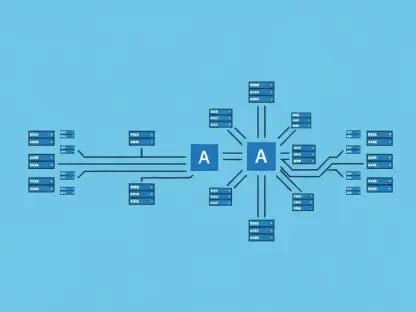In the fast-evolving world of software development, clean code is often the dividing line between success and chaos. Today, we’re speaking with Vijay Raina, a seasoned expert in enterprise SaaS technology and software design. With his vast experience, Vijay will shed light on some of the anti-patterns that can jeopardize software projects and share insights on how to navigate the complexities of code design and architecture effectively.
Could you explain the concept of “God Class” or “God Method” and why it’s considered an anti-pattern in software development?
The “God Class” or “God Method” is a classic anti-pattern where a single class or method takes on too many responsibilities, effectively becoming an all-powerful entity in the codebase. This approach violates the Single Responsibility Principle, making the code hard to manage, understand, and test. It creates a fragile system that’s difficult to extend or modify without breaking something else, ultimately inhibiting the evolution of the software.
What problems arise by mixing validation, business logic, and logging within a single method?
Mixing different kinds of logic, such as validation, business logic, and logging, in a single method leads to code that’s tangled and difficult to test. This violates the separation of concerns principle, making it challenging to isolate and address issues when they arise. Such an approach also hinders reusability and clarity, as the flow of the program becomes convoluted with each new layer of logic added to the same method.
Why are magic strings considered error-prone, and what issues might they cause in a codebase?
Magic strings are literal string values hard-coded into the codebase without clear context or documentation, making them error-prone. Any typo, inconsistency, or change required for these strings can lead to runtime errors that are hard to track. They can proliferate throughout the system, leading to chaos in maintenance, as there is no compile-time safety or clear mapping of where these values are used.
Can you describe a situation where a typo in a string caused a significant error, such as breaking production?
I’ve seen cases where a small typo in a string, such as a case sensitivity issue between ‘PREMIUM’ and ‘PremIum’, led to significant errors. In one instance, customers didn’t receive their expected discounts during a promotion, which caused an immediate business impact. The root cause was a typo buried in the code, which was difficult to diagnose because the logic wasn’t centralized in a way that made it straightforward to check for these kinds of discrepancies during testing.
What is an “If-Else Tower,” and how does it violate the Open/Close Principle in object-oriented design?
An “If-Else Tower” occurs when there are successive layers of conditional logic that determine different paths in the execution of the program. This setup violates the Open/Closed Principle, which states that software entities should be open for extension but closed for modification. Each time a new condition or case is added, existing code must be modified, risking errors and making the system more cumbersome to maintain.
How does tight coupling in a codebase become problematic, and why is it important to separate concerns?
Tight coupling occurs when different parts of the codebase are too dependent on each other, making changes in one module necessitate changes in many others. This creates a fragile structure where even small modifications can have widespread unintended consequences, hindering flexibility and scalability. Separation of concerns helps create more robust, adaptable systems, making it easier to test and evolve individual components without disrupting the whole.
What challenges do tightly-coupled systems pose when it comes to unit testing?
Tightly-coupled systems make unit testing challenging because components cannot easily be isolated for testing, leading to tests that are unreliable and hard to maintain. Mocking or stubbing dependencies becomes difficult, increasing the complexity of writing tests and potentially leading to false positives or negatives in test results. This situation can reduce developer confidence in the code’s stability over time.
How does the lack of reusability and extensibility in a codebase affect long-term maintenance and scalability?
A codebase lacking reusability and extensibility becomes burdensome over time, increasing maintenance costs and stalling the ability to scale or add new features swiftly. Inflexible code tends to become obsolete faster as it cannot accommodate evolving requirements or incorporate new technologies. This situation puts a bottleneck on innovation and drives up technical debt as hacks and workarounds accumulate.
Could you walk us through the steps to refactor a “God Method” using enums and the Strategy Pattern?
Refactoring a “God Method” starts by identifying and extracting distinct responsibilities within the method. You can then define enums to represent those responsibilities, like customer types. The Strategy Pattern can be applied by creating separate strategies for each responsibility. These strategies can be encapsulated in classes that implement a common interface. Use a strategy registry to associate each enum with its corresponding strategy, making the system more modular and easier to manage.
What purposes do enums serve in improving code quality and maintainability?
Enums improve code quality by providing a set of named constants that prevent the use of arbitrary magic numbers or strings. They enable type-safe operations and help document the code, making it easier to understand the meaning of different values. Enums can also be easily associated with specific behaviors or strategies, enhancing the maintainability and clarity of the code structure.
How does the Strategy Pattern help avoid anti-patterns like “God Class”?
The Strategy Pattern helps by decentralizing the control from a single method or class into multiple interchangeable strategies or behaviors. Each strategy encapsulates a specific part of the functionality, adhering to the Single Responsibility Principle. This modularity allows the system to be easily extended with new strategies without altering existing code, thus bypassing the issues associated with “God Classes.”
Why might a developer choose lambdas over traditional class-based strategies?
Lambdas provide a lightweight and concise way to express simple strategies without the boilerplate associated with creating full-fledged class hierarchies. They enable developers to write more readable and maintainable code, as they focus on the behavior itself rather than the entire object structure. This makes code easier to test and modify, facilitating rapid iterations and reducing overhead in development.
What are the advantages of using functional programming techniques for strategy implementations?
Functional programming techniques offer several advantages, including higher-order functions and immutability, which can lead to more predictable and less error-prone code. They enable strategies to be treated as first-class citizens, allowing them to be passed around and composed more easily. This flexibility enhances the modularity and testability of the system, making it easier to reason about and extend.
Could you explain the role of a StrategyRegistry in improving code modularity and testability?
A StrategyRegistry acts as a central repository where various strategies are registered and managed. It decouples the selection logic from the execution logic, promoting cleaner architecture and making it easier to add new strategies without altering existing code. This approach improves testability by allowing strategies to be mocked or swapped during testing, ensuring that tests can focus on the logic specific to each strategy.
How does the use of functional programming and lambdas contribute to achieving Open/Closed Principle (OCP)?
Functional programming and lambdas contribute to achieving OCP by allowing new functionalities to be added without modifying existing code structures. Through the use of higher-order functions and expression of logic in concise, modular segments, lambdas enable developers to extend behaviors while maintaining the integrity of the initial implementation. This results in a flexible codebase that adapts well to change.
What makes a registry approach suitable for creating a plugboard system in a codebase?
A registry approach is apt for creating a plugboard system because it abstracts the configuration of different strategies, focusing on plugging in and out different components seamlessly. This facilitates dynamic behavior changes without altering the core system. By using registries, it also becomes easy to integrate, swap, or expand functionalities in a plug-and-play manner, making the system more adaptable.
Why is hardcoding values like “FEST10” discouraged, and how can configuration classes improve this scenario?
Hardcoding values like “FEST10” is discouraged because it embeds data that might change into the logic itself, leading to rigidity and increased risk of bugs if the change is necessary. Using configuration classes helps manage such values externally, promoting a more organized and flexible way to adjust parameters. This approach also supports better dependency management and makes it easier to update applications across different environments.
How can binding configuration properties assist in creating clean, maintainable code?
Binding configuration properties allows dynamic adjustment of application parameters through externalized configurations. This methodology prevents the entanglement of configuration logic with actual business logic, leading to cleaner and more maintainable code. It aids in ensuring applications can safely adapt to different contexts and reduces the likelihood of errors associated with hardcoded values.
Could you describe what the phrase “Write code for tomorrow” means in the context of preparing for code changes?
“Write code for tomorrow” emphasizes creating software that is prepared for future changes and evolutions. It’s about designing systems that are resilient and adaptable to unforeseen requirements or technological advances. This mindset encourages developers to follow principles like modularity, reusability, and separation of concerns, ensuring their work remains relevant and effective in the face of change.
How does writing “clean code” contribute to surviving change and chaos in a software development environment?
Writing clean code enables software to endure and thrive amid change and chaos by establishing a solid foundation of principles such as readability, simplicity, and modularity. Clean code reduces complexity, minimizes bugs, and enhances collaboration, making it easier to adapt and modify codebases without introducing instability. It allows teams to respond swiftly and confidently to new demands, ensuring sustainability in the ever-evolving landscape of software development.









